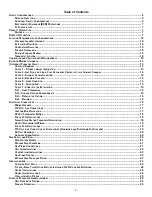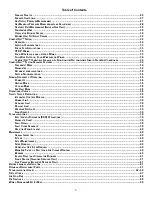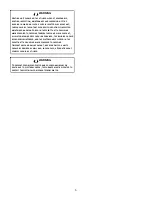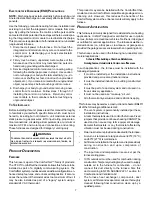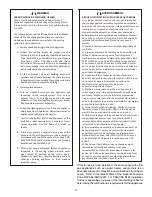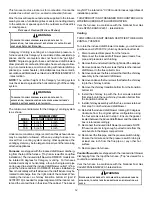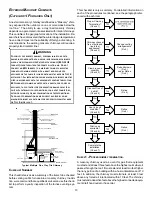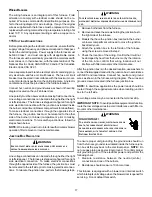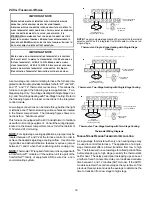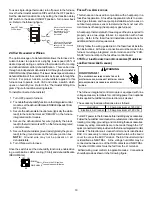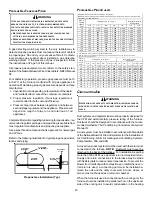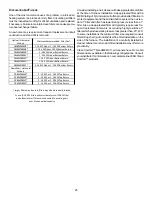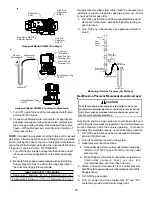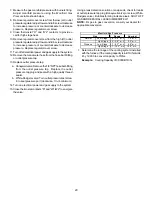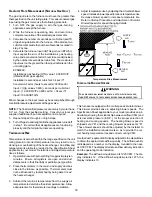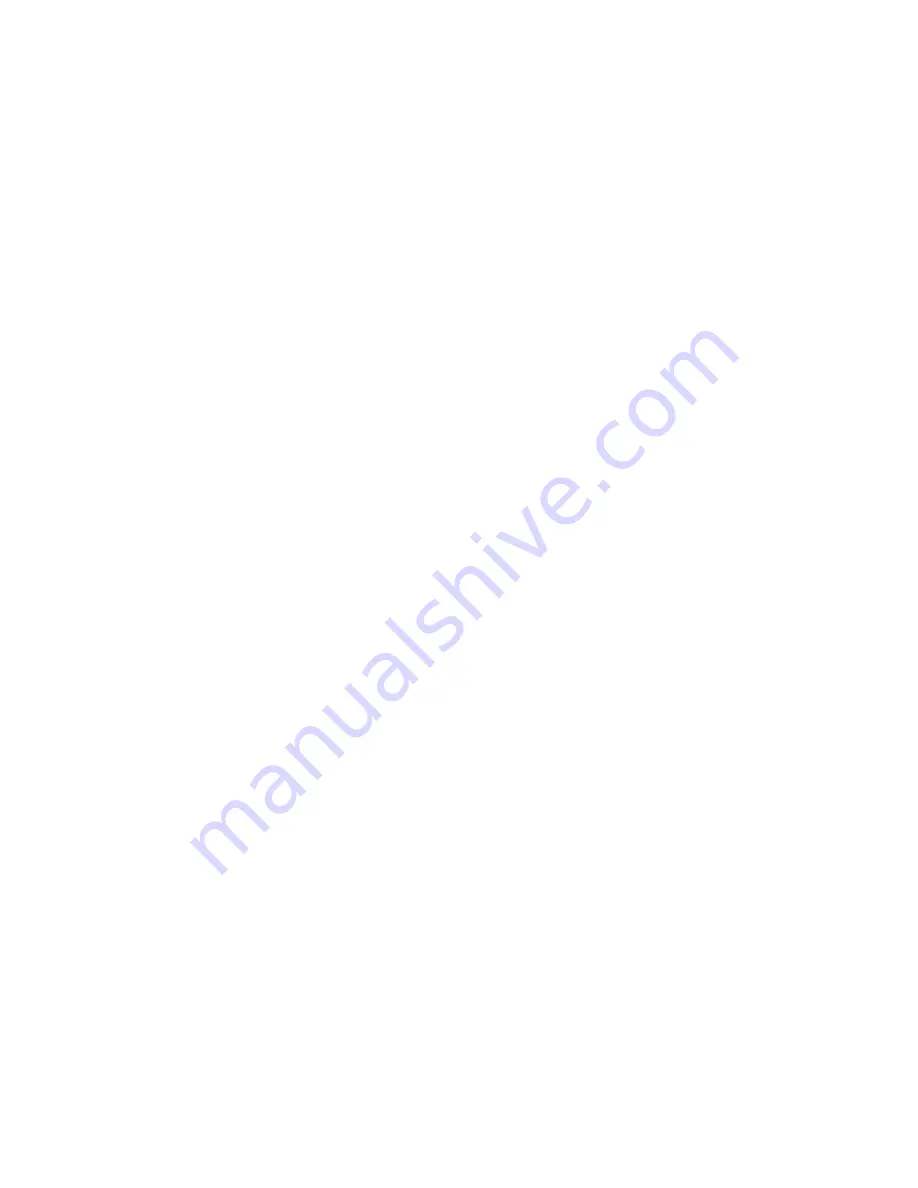
15
Gas Code NFPA 54/ANSI Z223.1 - latest edition and in the
National Standard of Canada, CAN/CSA B149.1 and CAN/CSA
B149.2 - latest editions and amendments, then the clay tile
liner can probably be used as a vent for the gas appliances.
However, the installer must keep in mind the following factors
which may render the tile liner unsuitable for use as a vent:
•
Extremely cold weather
•
Long vent connectors
•
Masonry chimneys with no air gap between the liner
and the bricks. (In practice, this can be difficult to
detect.)
•
Exterior chimneys (The tables in National Fuel Gas
Code NFPA 54/ANSI Z223.1 - latest edition and in the
National Standard of Canada, CAN/CSA B149.1 and
CAN/CSA B149.2 - latest editions and amendments
assume interior chimneys.)
If, in the judgment of the local gas utility, installer, and/or local
codes; one or more of the above factors is likely to present a
problem, the chimney must be relined (Fix 4).
F
IX
1 - L
INER
T
ERMINATION
Any cap or roof assembly used with a liner must be approved
by the liner manufacturer for such use. The liner and cap/roof
assembly must then terminate above the roof in accordance
with the manufacturer’s instructions.
In some cases, a shorter extension above the roof may be
possible with a liner than would be required with a masonry
chimney.
For further information on relining, see Fix 4.
F
IX
2 -C
HANGE
V
ENTING
A
RRANGEMENTS
If the masonry chimney has more than one channel, it may be
possible to vent the gas appliances into one channel and vent
the solid or liquid fuel appliance(s) into another channel(s). Do
not vent an 80+ Furnace inside of a metal liner with other appli-
ances vented outside the liner.
Alternatively, the homeowner may agree to discontinue use of
the fireplace (solid fuel appliance). If so, the tile liner must be
cleaned to remove creosote buildup. The fireplace opening must
then be permanently sealed.
If oil-fired appliance(s) are being replaced by gas-fired
appliance(s), the tile liner must first be cleaned to remove the
fuel oil residue.
If none of the above options is practical, the furnace may need
to be vented vertically with a B Vent.
Under some conditions, a 90%+ furnace could be installed rather
than an 80% furnace. The 90%+ furnace can be vented hori-
zontally or vertically through PVC pipe.
Next, use a flashlight and small mirror to sight up the liner. B
vent must be supported so as to not come into direct contact
with the chimney walls or tile liner. If it is not, it can probably be
rehung so as to be acceptable. A thimble or fire stop may be
helpful here.
Flexible liners should be hung straight or nearly straight. If it is
spiraled in the chimney and in good condition, it should be
rehung. To do this, break the top seal; pull up and cut off the
excess liner length, and refit the top seal. Use caution when
doing this, as the cut edges of flexible liners may be sharp.
The surfaces of the liner must be physically sound. If gaps or
holes are present, the metal liner must be removed and re-
placed (Fix 4). Finally, confirm that the metal liner is the cor-
rect size for the appliances to be installed. Use the GAMA
tables and rules.
If a metal liner is not present, a clay tile liner must be present,
or the chimney must be lined (Fix 4).
Use a flashlight and small mirror at the cleanout or vent con-
nector to inspect the clay tile liner. If any of the following prob-
lems are present:
•
Tile sections misaligned
•
Tile sections missing
•
Gaps between tile sections
•
Signs of condensate drainage at the cleanout or vent
connectors
•
Mortar protruding from between tile sections
•
Use of sewer pipe or drainage pipe rather than an
approved fire clay tile reline the chimney (Fix 4).
Next, measure the size of the liner. It may be possible to do
this from the cleanout. The liner must be at least as large as
the minimum size established by the tables in National Fuel
Gas Code NFPA 54/ANSI Z223.1 - latest edition and in the
National Standard of Canada, CAN/CSA B149.1 and CAN/CSA
B149.2 - latest editions and amendments. If the liner is too
small or too large, then the chimney must be relined (Fix 4).
C
HECK
6 - D
ILUTION
A
IR
If gas-fired appliances are to be vented into a clay tile liner, a
source of dilution air is required.
Dilution air cannot be obtained through:
•
Induced draft appliances
•
Natural draft appliances with vent dampers
Sufficient dilution air can ordinarily be obtained through the draft
hood of a natural draft appliance only if the appliance’s vent
connector does not include a vent damper. If dilution air will not
be available, the chimney must be relined (Fix 4).
C
HECK
7 - C
OMPLETE
THE
I
NSTALLATION
If Checks 1 through 6 have been satisfactory, and the liner is an
acceptable size as determined by the tables in National Fuel


